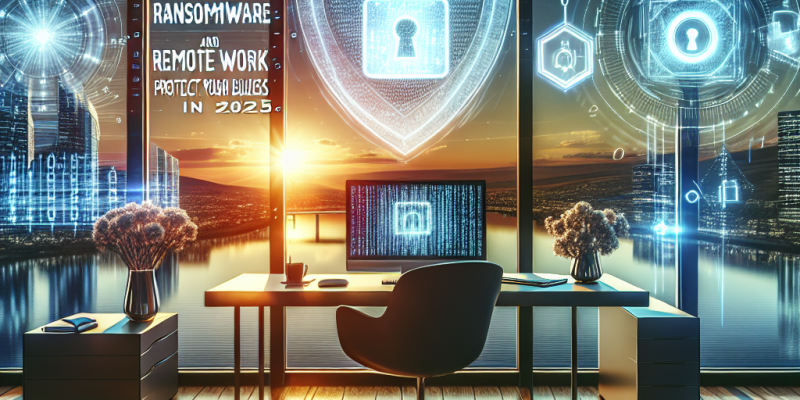Ransomware and Remote Work: Protecting Your Business in 2025

Ransomware and Remote Work: Protecting Your Business in 2025
As we move further into 2025, the landscape of remote work has evolved significantly, but so have the threats that come with it. Ransomware attacks continue to rise, targeting businesses of all sizes. This article will explore the risks associated with ransomware in a remote work environment and offer practical strategies to help protect your business.
Understanding Ransomware
Ransomware is a type of malicious software that locks users out of their files or systems, demanding a ransom for access. In recent years, cybercriminals have become more sophisticated, using various tactics to infiltrate systems. Phishing emails, malicious links, and unsecured networks are common ways they gain access.
The Rising Risks in Remote Work
-
Increased Vulnerability: With employees working from home, many use their personal devices and unsecured Wi-Fi networks. These conditions create more entry points for attackers.
-
Lack of IT Oversight: In an office environment, IT teams can monitor and manage security more effectively. Remote work may lead to outdated software and weak cybersecurity practices.
-
Data Sensitivity: Employees often handle sensitive data from home without the same level of protection as in the office. Breaches can lead to severe financial and reputational damage.
Key Strategies for Protection
-
Invest in Cybersecurity Training: Staff training is crucial. Employees should be educated on recognizing phishing attempts, safe internet browsing, and the importance of strong passwords.
-
Use VPNs: Virtual Private Networks (VPNs) encrypt internet traffic, making it difficult for attackers to intercept data. Ensure that all employees use a reliable VPN when accessing company information remotely.
-
Implement Two-Factor Authentication (2FA): 2FA adds an extra layer of security by requiring a second verification method, such as a text message or app notification, to access accounts.
-
Regular Software Updates: Keeping software and operating systems up to date helps close security loopholes that cybercriminals may exploit.
-
Backup Data Regularly: Regular backups can minimize losses in case of a ransomware attack. Work with a secure cloud service to keep data safe and ensure it is easily recoverable.
-
Establish an Incident Response Plan: An effective response plan outlines how to react in case of a ransomware attack. This can include communication strategies, recovery procedures, and engaging law enforcement if necessary.
-
Secure Remote Access Protocols: Only allow remote access to the necessary systems and use strict permissions to limit exposure. Consider remote desktop software with strong security measures built in.
-
Monitor and Audit Systems: Regularly review your cybersecurity measures and conduct audits to identify vulnerabilities. Awareness of your systems can help you notice unusual activity early.
Conclusion
As ransomware attacks become more prevalent in 2025, businesses need to stay proactive in protecting themselves, especially in a remote work environment. By implementing strong cybersecurity practices, training employees, and preparing an effective response plan, companies can reduce their vulnerability to ransomware threats. With the right measures in place, your business can thrive even in this challenging landscape.














